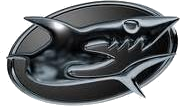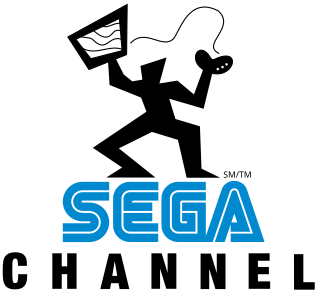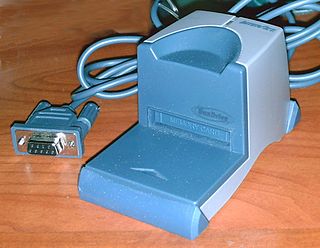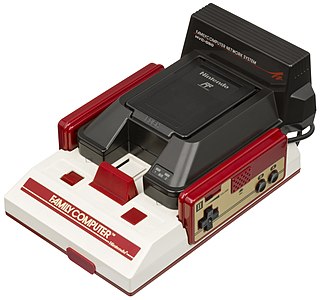
The Doctor V64 is a development and backup device made by Bung Enterprises Ltd that is used in conjunction with the Nintendo 64. The Doctor V64 also had the ability to play video CDs and audio CDs. Additionally, it could apply stereo 3D effects to the audio.

The Nintendo 64 (N64) is a home video game console developed by Nintendo. It was released on June 23, 1996, in Japan; on September 29, 1996, in North America; and on March 1, 1997, in Europe and Australia. The successor to the Super Nintendo Entertainment System, it was the last major home console to use cartridges as its primary storage format until the Nintendo Switch in 2017. It competed primarily with the Sony PlayStation and the Sega Saturn.

The 64DD is a magnetic floppy disk drive peripheral for the Nintendo 64 game console developed by Nintendo. It was announced in 1995, prior to the Nintendo 64's 1996 launch, and after numerous delays was released in Japan on December 13, 1999. The "64" references both the Nintendo 64 console and the 64MB storage capacity of the disks, and "DD" is short for "disk drive" or "dynamic drive".
GameLine was a dialup game distribution service for the Atari 2600, developed and operated by Control Video Corporation. Subscribers could install the proprietary modem and storage cartridge in their home game console, accessing the GameLine service to download games over a telephone line. GameLine had an exclusive selection of games, and its pioneering business model eventually gave rise to America Online. Despite being ahead of its time, it wasn't very popular, possibly due to its price of $60 for the hardware, $15 for the membership fee, and $1 per game, which you could only keep for a week.

The Satellaview is a satellite modem peripheral produced by Nintendo for the Super Famicom in 1995. Containing 1 megabyte of ROM space and an additional 512 kB of RAM, Satellaview allowed players to download games, magazines, and other media through satellite broadcasts provided by Japanese company St.GIGA. Its heavy third-party support included Squaresoft, Taito, Konami, Capcom, and Seta. To use Satellaview, players purchased a special broadcast satellite (BS) tuner directly from St.GIGA or rented one for a six-month fee. It attaches to the expansion port on the bottom of the Super Famicom.

The Game Boy Camera, released as Pocket Camera in Japan, is a Nintendo accessory for the handheld Game Boy game console. It was released on February 21, 1998, in Japan, and manufacturing ceased in late 2002. As a toy for user-generated content, it can be used to shoot grayscale photographs, edit them or create original drawings, and transfer images between GBC units or to the 64DD art game suite Mario Artist. The accessory featured a 180°-swivel front-facing camera that allowed users to capture selfies. Its images can be printed to thermal paper with the Game Boy Printer. The GBC's cartridge contains minigames based on Nintendo's early games such as the arcade video game Space Fever and the Game & Watch handheld game Ball, and a chiptune music sequencer; photographers have embraced its technological limitations as artistic challenges.
Spyglass, Inc. was an Internet software company. It was founded in 1990, in Champaign, Illinois, as an offshoot of the University of Illinois at Urbana–Champaign, and later moved to Naperville, Illinois. Spyglass was created to commercialize and support technologies from the National Center for Supercomputing Applications (NCSA). It focused on data visualization tools, such as graphing packages and 3D rendering engines.

GameShark is the brand name of a line of video game cheat cartridges and other products for a variety of console video game systems and Windows-based computers. Currently, the brand name is owned by Mad Catz, which marketed GameShark products for the Sony PlayStation, Xbox, and Nintendo game consoles. Players load cheat codes from GameShark discs or cartridges onto the console's internal or external memory, so that when the game is loaded, the selected cheats can be applied.

Datel is a UK-based electronics and game console peripherals manufacturer. The company is best known for producing a wide range of hardware and peripherals for home computers in the 1980s, for example replacement keyboards for the ZX Spectrum, the PlusD disk interface and the Action Replay series of video game cheating devices.

The Sega Channel is a discontinued online game service developed by Sega for the Sega Genesis video game console, serving as a content delivery system. Launched on December 14, 1994, the Sega Channel was provided to the public by TCI and Time Warner Cable through cable television services by way of coaxial cable. It was a pay to play service, through which customers could access Genesis games online, play game demos, and get cheat codes. Lasting until July 31, 1998, the Sega Channel operated three years after the release of Sega's next generation console, the Sega Saturn. Though criticized for its poorly timed launch and high subscription fee, the Sega Channel has been praised for its innovations in downloadable content and impact on online game services.

Mario Artist is an interoperable suite of three games and one internet application for Nintendo 64: Paint Studio, Talent Studio, Polygon Studio, and Communication Kit. These flagship disks for the 64DD peripheral were developed to turn the game console into an Internet multimedia workstation. A bundle of the 64DD unit, software disks, hardware accessories, and the Randnet online service subscription package was released in Japan starting in December 1999.
XBAND was one of the first competitive online console gaming networks and was available for the Genesis and Super NES. It was produced by Catapult Entertainment in Cupertino, California. It is the only modem released in America to have been officially licensed by Nintendo. It debuted in various areas of the United States between November 1994 and June 1995 and was later released nationwide between October 2 and 8, 1995.

DexDrive is a discontinued line of home video game console memory card readers released in 1998, allowing saved game data transfer to a personal computer. It was made by now-defunct InterAct for use with PlayStation and Nintendo 64 memory cards. The company hosted a curated website to facilitate online sharing of saved game data.

The GameCube is one of Nintendo's home video game consoles and part of the sixth generation of video game consoles. Although the competing PlayStation 2 and Xbox consoles supported substantial amounts of online games, the GameCube had only eight games with internet or local area network (LAN) support. Nintendo never commissioned any servers or internet services to interface with the console, but allowed other publishers to do so and made them responsible for managing the online experiences for their games. Nintendo remained pensive with its online strategy for the duration of the GameCube's lifespan, defiant of growing interest from players and the success of Microsoft's Xbox Live online service. Company leaders including Shigeru Miyamoto and Satoru Iwata based their stance on concerns with maintaining quality control over their games and doubts that players would want to pay subscription fees.
Nintendo 64 accessories are first-party Nintendo hardware—and third-party hardware, licensed and unlicensed. Nintendo's first-party accessories are mainly transformative system expansions: the 64DD Internet multimedia platform, with a floppy drive, video capture and editor, game building setup, web browser, and online service; the controller plus its own expansions for storage and rumble feedback; and the RAM-boosting Expansion Pak for big improvements in graphics and gameplay. Third-party accessories include the essential game developer tools built by SGI and SN Systems on Nintendo's behalf, an unlicensed SharkWire online service, and unlicensed cheaper counterparts to first-party items. In the fifth generation of video game consoles, the Nintendo 64 had a market lifespan from 1996 to 2002.

The Family Computer Network System, also known as the Famicom Net System and Famicom Modem, is a peripheral for Nintendo's Family Computer video game console, and was released in September 1988 only in Japan. Predating the modern Internet, its proprietary dial-up information service accessed live stock trades, video game cheats, jokes, weather forecasts, betting on horse racing, and a small amount of downloadable content. The device uses a ROM card storage format, reminiscent to the HuCard for the TurboGrafx-16 and the Sega Card for the Master System.
Online console gaming involves connecting a console to a network over the Internet for services. Through this connection, it provides users the ability to play games with other users online, in addition to other online services.

Nintendo 64 Game Pak is the brand name of the ROM cartridges that store game data for the Nintendo 64. As with Nintendo's previous consoles, the Game Pak's design strategy was intended to achieve maximal read speed and lower console manufacturing costs through not integrating a mechanical drive, with a drawback of lower per dollar storage capacity compared to a disk. From the console's first year from late 1996 through 1997, Game Pak sizes were 4 to 12 megabytes with a typical third party retail price of US$75.99, then available in 32 megabytes in 1998, and finally 64 megabytes from 1999 onwards.












